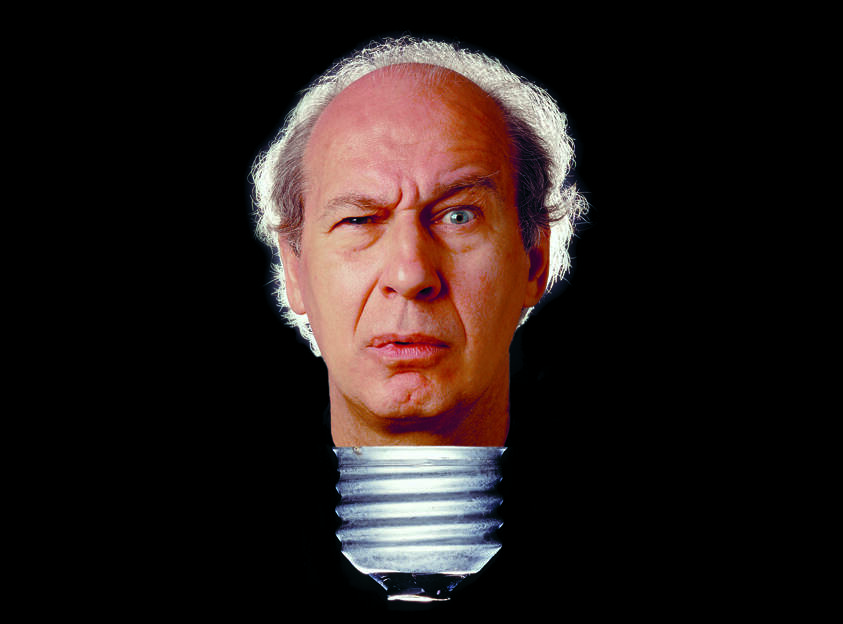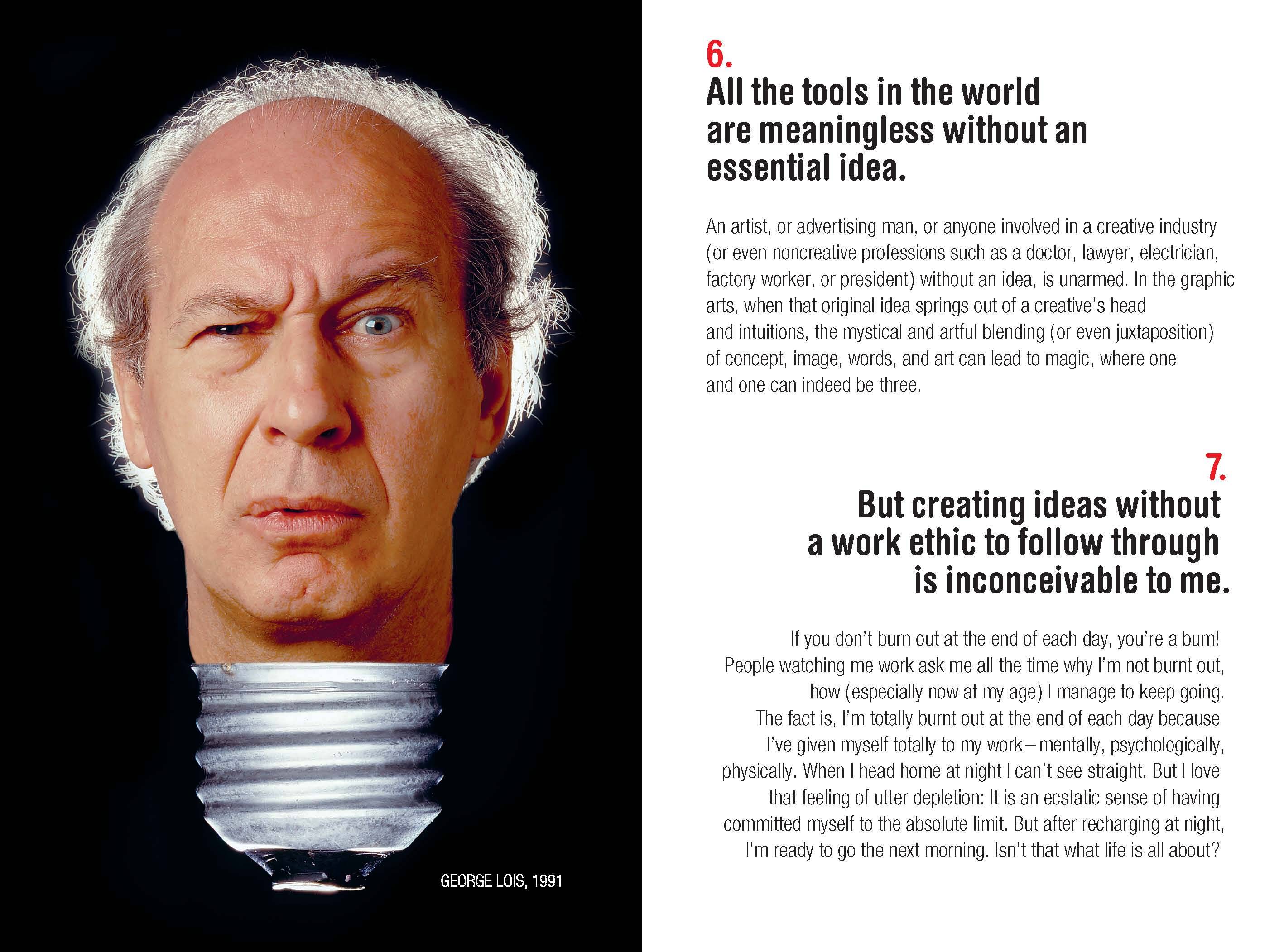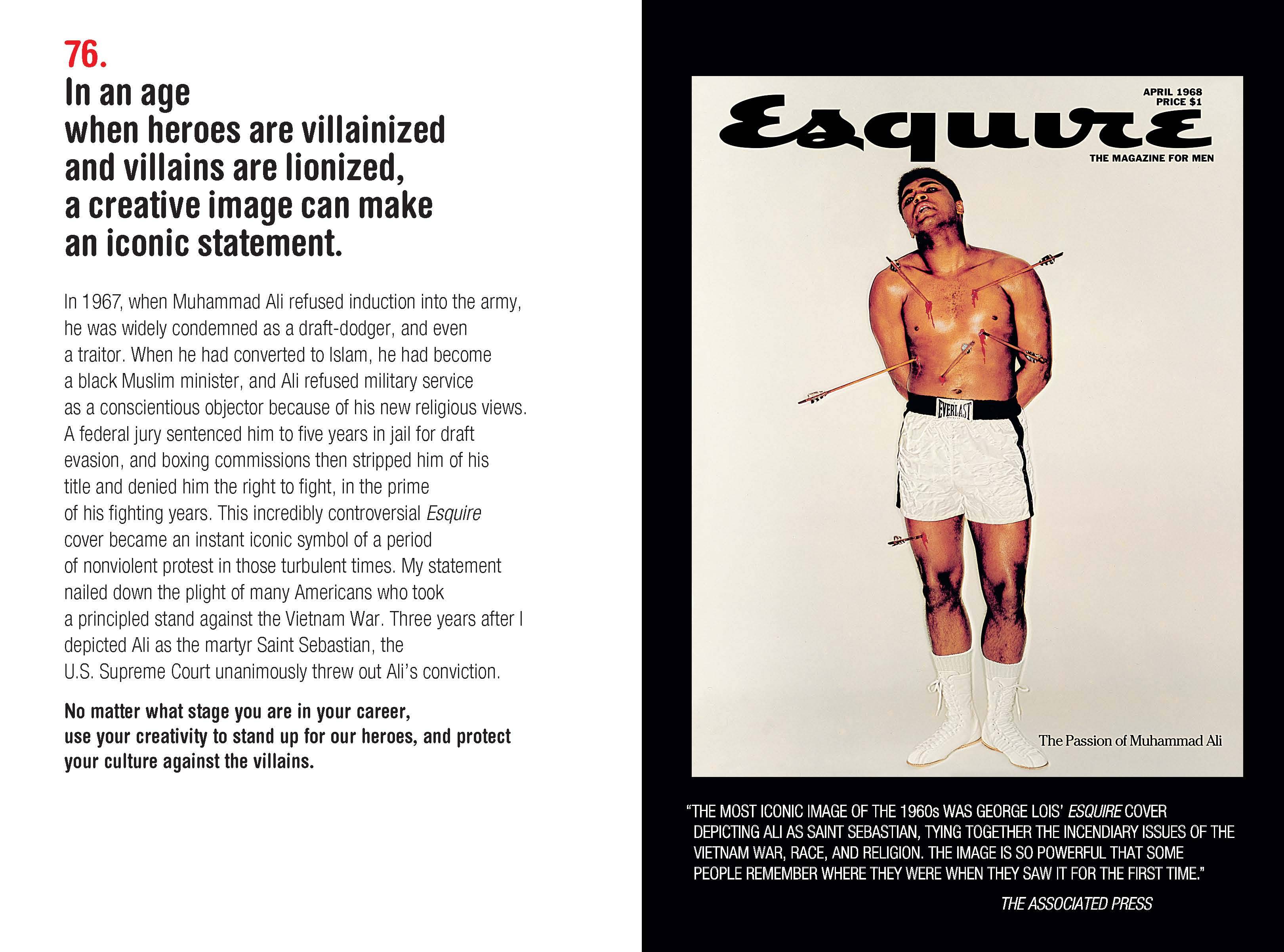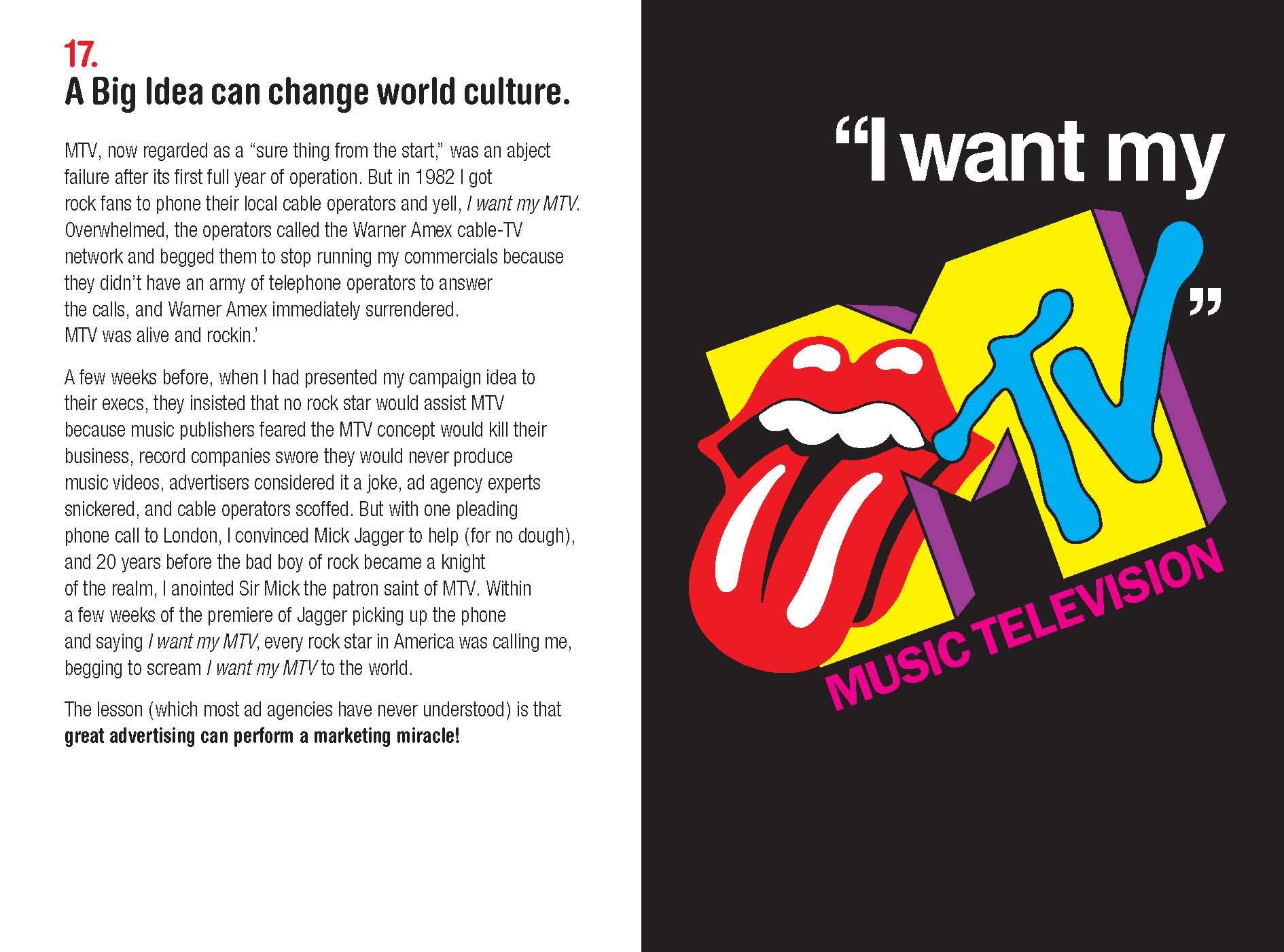
The creative brilliance of George Lois
We look back at the creative visionary's life and work, following his death last week aged 91
George Lois didn’t think young people knew how to use a pencil. "They don't even know how to hold one,” the great American art director - who has died aged 91 - told Phaidon.com during an interview back in 2014.
He also advised against looking for ideas online. “Don’t expect a creative idea to pop out of your computer,” was how he put it in his hugely popular guide to creative success, Damn Good Advice (For People With Talent).
“It occurred to me while talking to students at the School of Visual Arts in New York,” Lois, explained later. “After my talk, all the kids got to work at their work stations. I sat down with one of them, and asked him what he was doing? 'I'm looking for an idea' he said. I said 'What are you looking at? There's nothing there!'”
This rejection of the digital, and preference for paper might single Lois out as something of a reactionary in today’s ad business. In fact, Lois was a revolutionary, who, during the 1950s, ‘60s and ‘70s, introduced countercultural ideas and practices into the once stuffy and conservative agencies of Madison Avenue.

Pages from Damn Good Advice
Born in New York on 26 June 1931 into a family of Greek immigrants, Lois studied for a year at Pratt Institute in Brooklyn, before dropping out to work for the acclaimed American graphic designer Reba Sochis.
After serving two years in the US army during the Korean War, Lois joined CBS TV in 1954, before taking a number of art director positions at highly regarded agencies.
In 1962 he augmented his ad career with freelance contributions at Esquire magazine, producing a total of 92 covers for the magazine over the following years, the best known of which include Muhammad Ali styled as the martyred San Sebastian, and the pop artist Andy Warhol drowning in a can of Campbell’s Soup. Until recently, journalists at the UK arm of the magazine would pass floor to ceiling recreations of the covers as they approached their own work stations each morning. No pressure...

Pages from Damn Good Advice
Turning his hand to campaigning, in 1975, Lois advocated for the release of the boxer, Rubin ‘Hurricane’ Carter, convincing Bob Dylan to take up the cause. Dylan composed his 1975 song, Hurricane, partly at Lois’s suggestion. “He even checked the lyrics with me,” the ad man - no stranger to a bit of embellishment here and there - later claimed.
However, Lois created his best-known, and perhaps most successful campaign in 1982, when he helped turn MTV from an abject failure into a worldwide success, with his slogan, “I Want My MTV” - a phrase sung by Sting and immortalised on the Dire Straits track: Money for Nothing.
“In 1982 I got rock fans to phone their local cable operators and yell, I want my MTV,” Lois explains in Damn Good Advice. “Overwhelmed, the operators called the Warner Amex cable-TV network and begged them to stop running my commercials because they didn’t have an army of telephone operators to answer the calls, and Warner Amex immediately surrendered. MTV was alive and rockin.’

Pages from Damn Good Advice
“A few weeks before, when I had presented my campaign idea to their execs, they insisted that no rock star would assist MTV because music publishers feared the MTV concept would kill their business, record companies swore they would never produce music videos, advertisers considered it a joke, ad agency experts snickered, and cable operators scoffed,” he goes on.
“But with one pleading phone call to London, I convinced Mick Jagger to help (for no dough), and 20 years before the bad boy of rock became a knight of the realm, I anointed Sir Mick the patron saint of MTV. Within a few weeks of the premiere of Jagger picking up the phone and saying I want my MTV, every rock star in America was calling me, begging to scream ‘I want my MTV’ to the world.”
Those screams may have died away, but Lois continued to work, lecture and write well into the 21st century. In 2003 Phaidon published $ellebrity in which the art director opens up on 140 of his campaigns involving prominent public figures, from Elvis to Jackie Onassis, followed by Damn Good Advice, his distilled thoughts on how to nurture a successful and sustained creative process.

Damn Good Advice
“Creativity can solve almost any problem,” he wrote in the preface to this second book, “the creative act, the defeat of habit by originality, overcomes everything.” It’s a sentiment that those starting out in advertising today – regardless of screen time or pencil skills – would do well to keep in mind. Rest in Peace George. You were, and will always remain, a complete legend.
To read more wise words from this late, great creative visionary, order a copy of Damn Good Advice here.